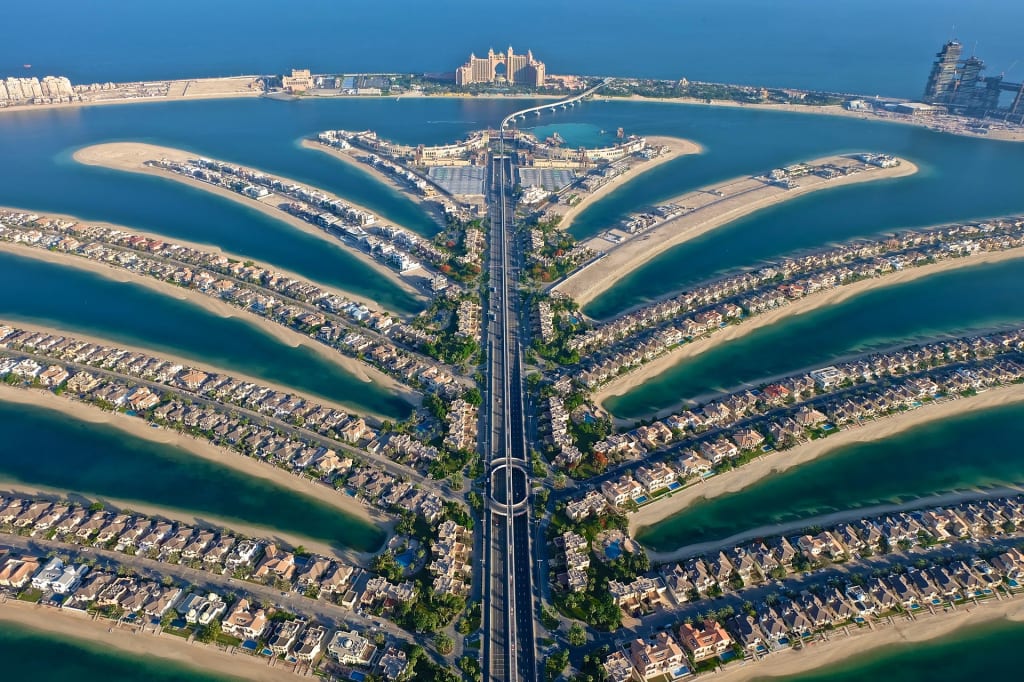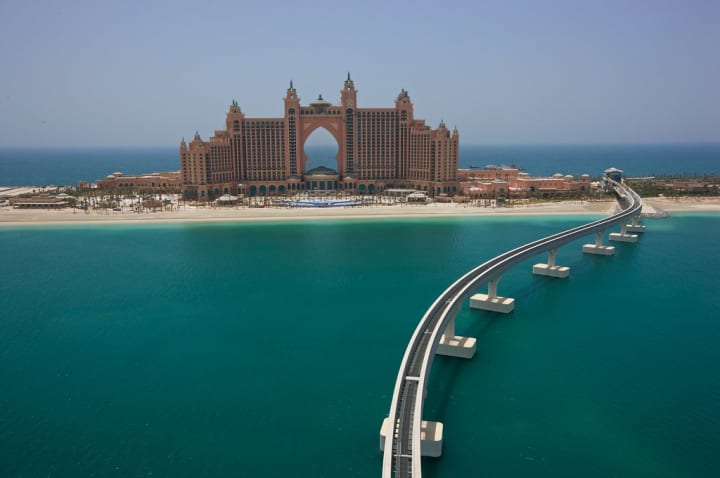Dubai's Palm Jumeirah: A Man-Made Marvel in Dubai's Seas
The Birth and Triumph of Palm Jumeirah

Palm Jumeirah, one of Dubai's most iconic landmarks, is a testament to the city's boundless ambition and engineering prowess. This man-made archipelago in the United Arab Emirates stands as a testament to human ingenuity and determination. This article explores the history, challenges, and incredible construction of Palm Jumeirah, a symbol of Dubai's commitment to creating unique and awe-inspiring destinations.
The Genesis of Palm Jumeirah
Palm Jumeirah is part of a larger series of ambitious developments known as the Palm Islands, which also include Palm Jebel Ali and Palm Deira. These projects aimed to expand Dubai's coastline by an astonishing 320 miles when completed. Palm Islands are renowned for their distinct palm tree-shaped designs, visible from space.
The brainchild of Sheikh Mohammed bin Rashid Al Maktoum, the Palm Islands were envisioned as a strategy to attract investment to Dubai as its reliance on oil revenues declined. Nakheel Properties, a local developer, partnered in turning this visionary concept into reality.
Construction Challenges and Techniques
The construction of Palm Jumeirah was an engineering marvel, characterized by its immense scale and audacity. The process began in the early 21st century, primarily funded by Dubai's oil revenue. However, the sheer magnitude of the project posed significant challenges.
Land Reclamation: The foundation of Palm Jumeirah involved the reclamation of vast amounts of land. Over 53 million pounds of sand and 12 million pounds of rock were used to create the islands. It's estimated that the materials used could build a 2-meter-wide wall encircling the globe multiple times.
Protective Sea Wall: To safeguard the island from the sea's forces, an 11-kilometer-long man-made sea wall was constructed in a bow shape. This barrier also protects against occasional shamal winds.
Underwater Geoengineering: Geotextile membranes and layers of rocks were used to stabilize the seabed, preventing erosion and ensuring the island's stability.
Vibro Compaction: Innovative vibro compaction technology was employed to prepare the reclaimed land, enhancing load-bearing capacity and reducing the risk of liquefaction.
Palm Jumeirah's Construction Timeline
The construction of Palm Jumeirah was a massive undertaking that spanned several years. The project officially launched in 2001 and was completed in 2006, a testament to the efficiency and determination of the teams involved.
The island was divided into several key areas, including the trunk, crescent, and fronds. The trunk serves as the primary transportation corridor, while the fronds host a variety of properties, including luxury oceanfront villas and residences.
Tourism and Development
Upon completion, Palm Jumeirah became a thriving tourist destination and a symbol of Dubai's rapid growth. The centerpiece of the island is the Atlantis Hotel, a $1.5 billion resort offering underwater aquariums, water parks, and opulent accommodations.
In addition to the Atlantis Hotel, Palm Jumeirah boasts a plethora of residential properties, marinas, shopping malls, restaurants, sports facilities, and health spas. Its unique design and luxurious amenities have attracted not only tourists but also celebrities, making it a sought-after location for the rich and famous.
Environmental Concerns and Impact
While Palm Jumeirah stands as a marvel of engineering and design, it has not been without controversy. Environmentalists have criticized the project for its perceived lack of sustainability. The construction has had an impact on the local environment, including changes in coastal erosion patterns, altered wave patterns, and reduced sunlight reaching beach vegetation.

Conclusion
Palm Jumeirah, the first of Dubai's Palm Islands, stands as a testament to human ambition and innovation. Its construction, marked by incredible engineering feats, has reshaped the coastline of Dubai and become a global symbol of the city's ambition and luxury. While the project has not been without environmental concerns, it remains a must-visit destination for tourists and a testament to Dubai's commitment to creating unique and awe-inspiring landmarks.





Comments (1)
Great work! Fantastic work!